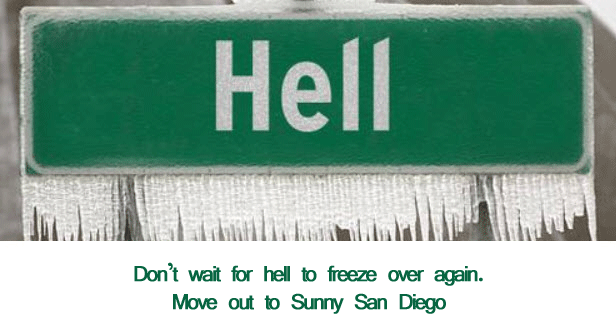During the real estate slump that bottomed out about five years ago, homeowners experienced a depressing decline in the value of their home. About the only good news was that in many cases, their property taxes went down.
But now, especially after property prices went up on average about 17 percent last year for San Diego home and condominium owners, more than a quarter of the county’s homeowners could receive letters this summer from the assessor’s office alerting them that their property taxes are going back up.
That’s why it’s important for you to know the current value of your home. The assessor, just like an appraiser determining the value of a home up for sale, compares nearby home sale records to determine the value for the current tax year as of Jan. 1. To get a free unofficial estimate, you can go to www.houseandcondovalues.com, a home-pricing tool sponsored by HouseRebate.com, a full-service discount real estate broker.
Here’s how it works, as explained by Jeff Olson, assessments chief for the San Diego County Assessor’s Office.
When the sweeping property tax reduction initiative Proposition 13 passed in 1978, it set the home valuation for property tax purposes at the sale price and provided for an annual reassessment not to exceed 2 percent. What it didn’t do is provide any rule or guideline for what to do if the value went down. To fix this, voters approved Proposition 8 in the November election (not to be confused with another Proposition 8 that banned gay marriage.) It provided that if the market value of your property falls below its assessed value, based on Prop. 13, the assessor can “temporarily” reduce that value.
Think of it this way. If you bought your home in 2008 for $500,000, that established its value for tax purposes. But for many people, prices dropped, and by 2010 your San Diego home or condo might have been worth $400,000. Prop. 8 gives homeowners a chance to appeal, and the housing crash was so widespread that the assessor’s office in 2009 looked at all properties sold between 2003 and 2008 to determine if the value had dropped.
Today, 28 percent of all San Diego properties (90 percent of them homes and condominiums) have a temporary reduction. That’s 278,000 properties out of 981,000 in San Diego County. Last year was the first year that the assessor started making “partial restorations,” increasing the valuation, but not all the way.
Olson describes the process as being like a staircase. When you started out with that $500,000 home purchase, property taxes went down a few steps because of the drop in home prices and subsequent decline in valuation. But Prop. 13 builds in a potential 2 percent a year inflation adjustment, so for example, the valuation in 2008 of $500,000 would increase to $510,000 in 2009 and go up the staircase each year after that.
By this year, many homeowners have not only recovered the purchase value of their home, but have seen it go up substantially beyond that. Under Prop. 13, the potential assessment for tax purposes is the “stair step” total of the sale price plus the annual step increase.
So be prepared. The assessor is required to notify San Diego taxpayers by July 15 if there is going to be adjustment. The assessor has not finished the number crunching, but estimates that about a quarter of San Diego County properties could see a tax bump on their bills due in December and next March.



